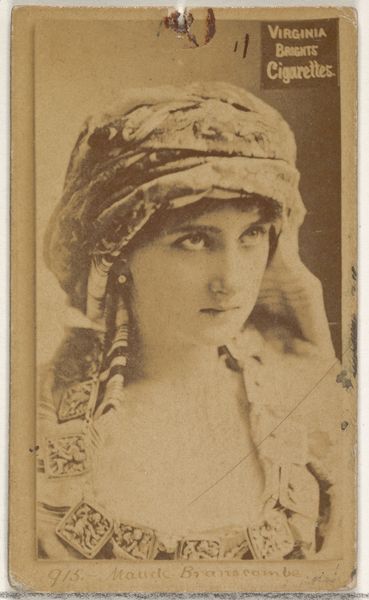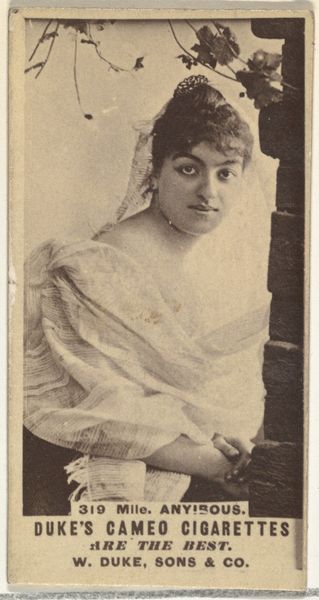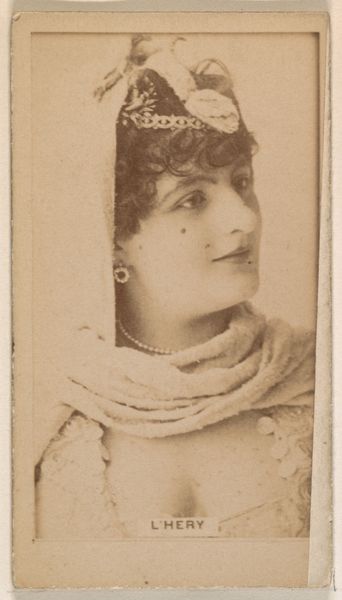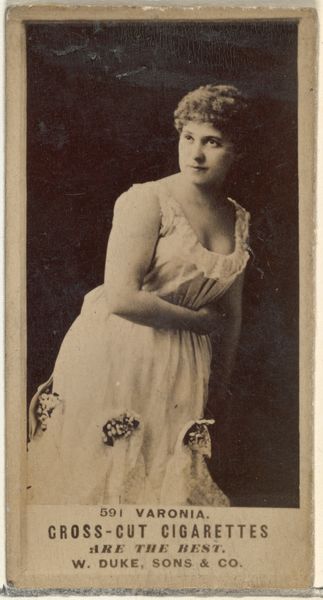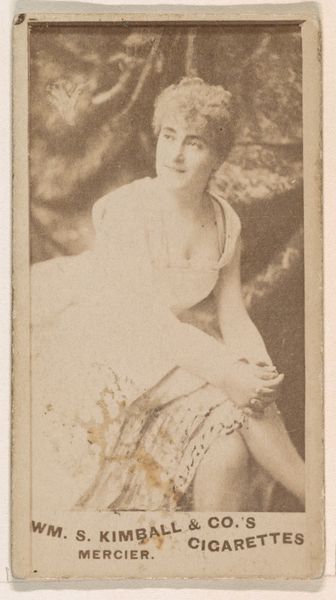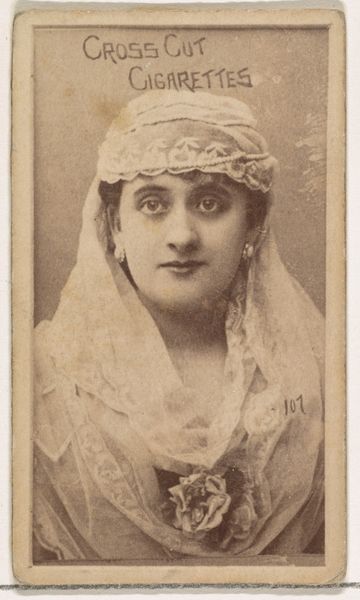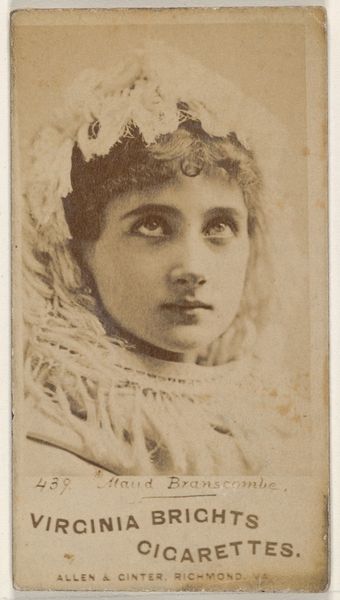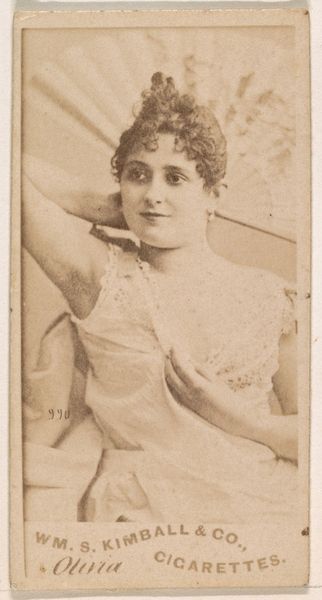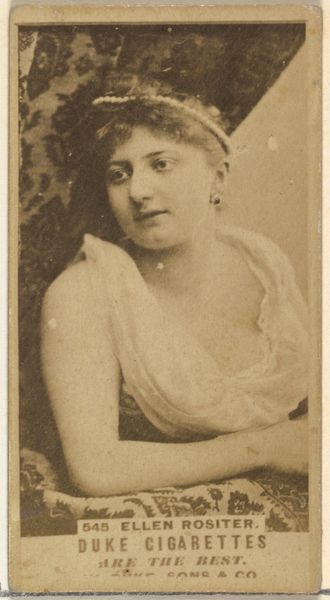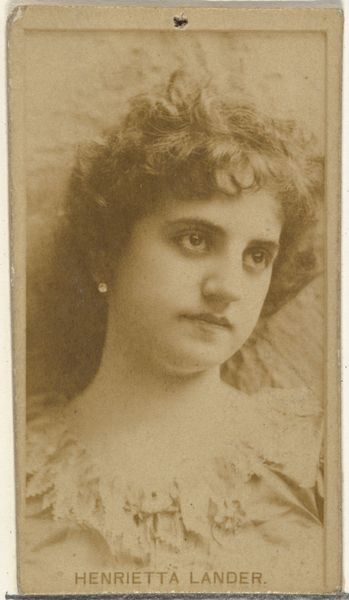
Miss Letty, from the Actresses series (N245) issued by Kinney Brothers to promote Sweet Caporal Cigarettes 1890
0:00
0:00
drawing, print, photography
#
portrait
#
drawing
# print
#
charcoal drawing
#
photography
#
realism
Dimensions: Sheet: 2 1/2 × 1 7/16 in. (6.4 × 3.7 cm)
Copyright: Public Domain
Curator: Here we have a trading card from 1890, featuring Miss Letty, an actress of the time. It comes from a series promoting Sweet Caporal Cigarettes made by the Kinney Brothers. Editor: The sepia tone gives it a wistful air. It feels strangely intimate for something that was essentially a commercial advertisement. Her clothing looks heavy, all those folds, that veil—I'm drawn to the textures. Curator: It's a portrait, but more importantly, it's a carefully constructed image meant to connect glamour and celebrity with a product. The Actresses series, like many promotional series, reflects the growing consumer culture of the late 19th century, where advertising was becoming more sophisticated. Editor: Right. The materiality speaks volumes. The paper stock, the printing process—all mass produced, made accessible. It democratized images in a way. Before, portraits were reserved for the elite, but now, you get one with your pack of cigarettes! How was this made? Was it a photograph converted to print? Curator: Exactly. It was made from photographs turned to prints to allow for easy and repeatable reproduction. These small cards ended up tucked in cigarette packs, aiming to associate smoking with the allure of the stage and its performers. Miss Letty becomes a brand ambassador, consciously or unconsciously. Editor: The textures must have been a trick of the printing too, highlighting areas on her costume to give the card greater tactile illusion. It seems these promotional photographs became a collection item—how very Warholian to assign celebrity to commodities this way. It elevates something everyday to something 'precious,' you know? Curator: Indeed, it foreshadows later trends. Collecting these cards became a popular hobby, blurring lines between advertisement, art, and ephemera. Consider the labor involved too – both in the performance captured and the countless workers printing these cards. Editor: That labor brings an unexpected tension into her otherwise calm composure. Something almost defiant about how she presents herself. It complicates what is often considered disposable image culture, and reveals the hidden industries operating to feed popular image production in the late nineteenth century. Curator: Precisely. This little card gives a glimpse into a world where celebrity, consumerism, and art intersected in unexpected ways, leaving its trace in cultural and economic practices. Editor: Makes you rethink where the value of something like this resides—certainly beyond the cost of cigarettes, huh?
Comments
No comments
Be the first to comment and join the conversation on the ultimate creative platform.

